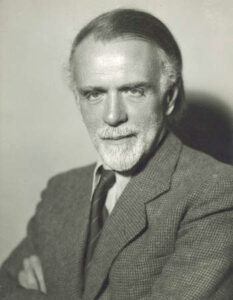Holy Eucharist Rite II at 10:30 a.m. sung by the St. John’s Choir School and Adult Choir, sermon by the Rev’d Margie Baker.
Worship at Home:
Click here: Service Bulletin
Service Music:
Voluntary Praeludium Zoltan Kodaly (1882-1967)

Silent Procession
Kyrie eleison S-84 Gregorian Chant, Orbis factor
Sequence Hymn 142 Lord, who throughout these forty days St. Flavian
Offertory Anthem Introit and Kyrie from Requiem Gabriel Fauré (1845-1924)
Words: from Missa pro defunctis
Requiem aeternam dona eis Domine: et lux perpetua luceat eis.
Te decet in hymnus, Deus in Sion: et tibi reddetur votum in Jerusalem.
Exaudi orationem meam, ad te omnis caro veniet.
Kyrie eleison. Christe eleison. Kyrie eleison.
Grant them rest eternal, Lord our God, we pray to thee:
and light perpetual shine on them for ever.
Thou, Lord, art worshipped in Sion; thy praises shall ever be sung in all Jerusalem.
Lord have mercy. Christ have mercy. Lord have mercy.
O hear us; O Lord God, hear thy faithful servants’ prayer; to thee shall all mortal flesh return.
Kyrie eleison.
Christe eleison.
Kyrie eleison.
Lord have mercy.
Christ have mercy.
Lord have mercy.

Sanctus Gregorian Chant, Deus Genitor alme
Fraction Anthem Agnus Dei Gregorian Chant, Deus Genitor alme
Communion Motet Offertory from Requiem Gabriel Fauré (1845-1924)
Patrick Reardon, tenor
O Domine, Jesu Christe, Rex Gloriae
libera animas defunctorum
de poenis inferni et de profundo lacu.
O Domine, Jesu Christe, Rex Gloriae
libera animas defunctorum de ore leonis
ne absorbeat eus Tartarus ne cadant in obscurum
Hostias et preces tibi Domine, laudis offerimus
tu suscipe pro animabus illis
quarum hodie memoriam facimus
Fac eas, Domine, de morte transire ad vitam
Quam olim Abrahae promisisti et semini eus.
Lord Jesus Christ, King of glory,
deliver the souls of all the faithful departed from the pains of hells and from the bottomless pit.
Lord Jesus Christ, King of glory,
Deliver them from the lion’s mouth,
nor let them fall into darkness,
neither the black abyss swallow them up.
We offer unto Thee this sacrifice of prayer and praise
Receive it for those souls
whom today we commemorate.
Allow them, o Lord, to cross from death into the life which once Thou didst promise to Abraham and his seed.
Communion Hymn 559 Lead us, heavenly Father Dulce carmen
Hymn in Procession 690 Guide me, O thou great Jehovah Cwm Rhondda
Voluntary Ite, missa est from Organoedia ad missam lectam Zoltan Kodaly (1882-1967)
Bruce Henley, assisting organist
Yingying Xia, organ scholar
